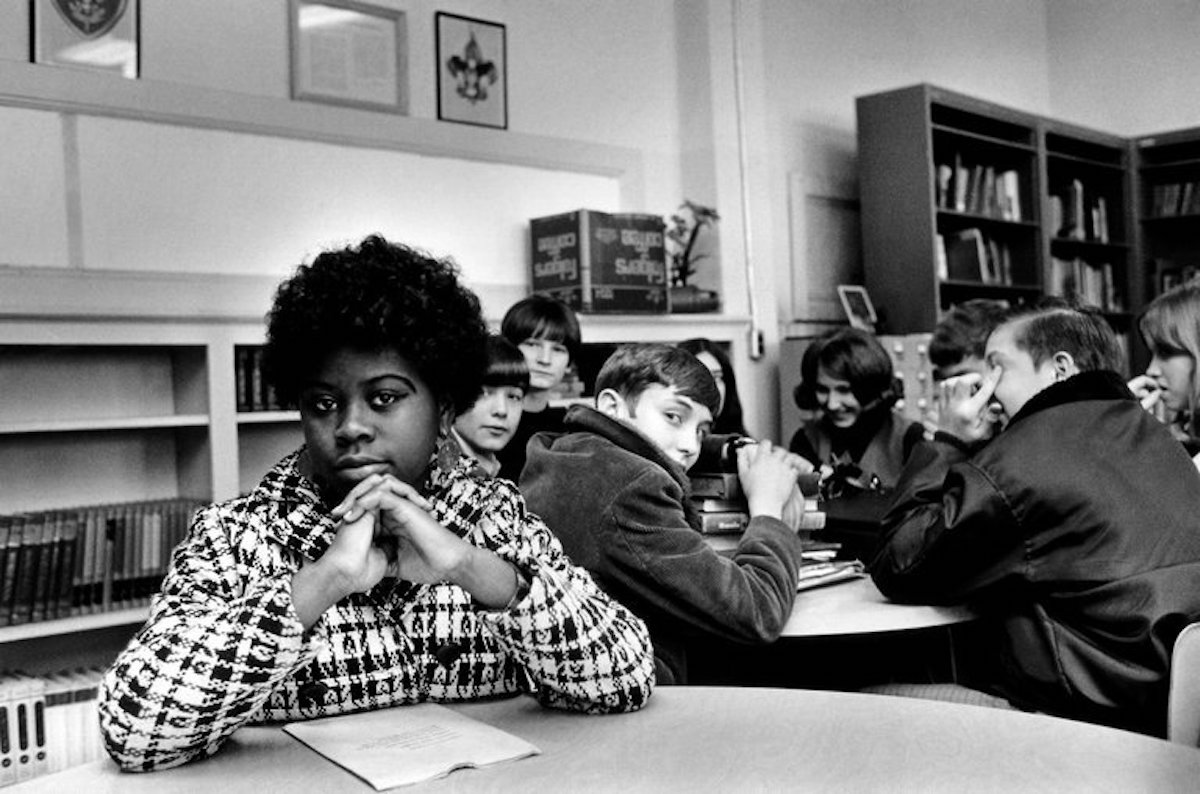[dropcap]On[/dropcap] Rebecca Palacios’s first day in front of a classroom, one of her white students picked up his chair and threw it toward her, declaring that he refused to be taught by a “Mexican teacher.” It was 1976, Palacios was 22 years old, and many of her first-grade students were at the school because of a recently launched busing program in Corpus Christi, Texas, that the courts had mandated in an effort to racially integrate campuses. Large numbers of white students were now traveling across town to her school—Lamar Elementary—which for generations had served mostly working-class Mexican American children.
Growing up in the 1950s and ‘60s, Palacios learned about American discrimination against Latinos first-hand. Her father, a World War II veteran who worked for the public-park service in Texas, spoke frequently about the daily humiliations of being a Latino in America—of not being able to eat in certain restaurants or use certain water fountains. He would recount stories of teachers prohibiting him from speaking Spanish in school, sometimes hitting him when he spoke it with his friends. [mc4wp_form id=”6042″]
The use of Spanish was still discouraged in Corpus Christi school buildings when Palacios became a student in the 1950s. Designed to funnel Latinos into vocational tracks such as factory jobs or secretarial work, these segregated schools didn’t offer academically ambitious students like Palacios the advanced classes they needed to attend college. But thanks to her high-school teachers—both white and Latino—who created the necessary coursework using their own resources, Palacios became the first person in her family to go to college.
Those teachers had a profound impact on Palacios’s life, and, in turn, on the thousands of students she taught in Corpus Christi. Over the three decades that followed that September day in 1976, Palacios would go on to became one of the most distinguished early-childhood educators in the country, renowned for promoting her students’ sense of agency, intellectual curiosity, and love of learning. The arc of her career captures some of the major shifts—desegregation, resegregation, and declines in public funding—that have shaped America’s schools over the past several decades.



You must be logged in to post a comment.